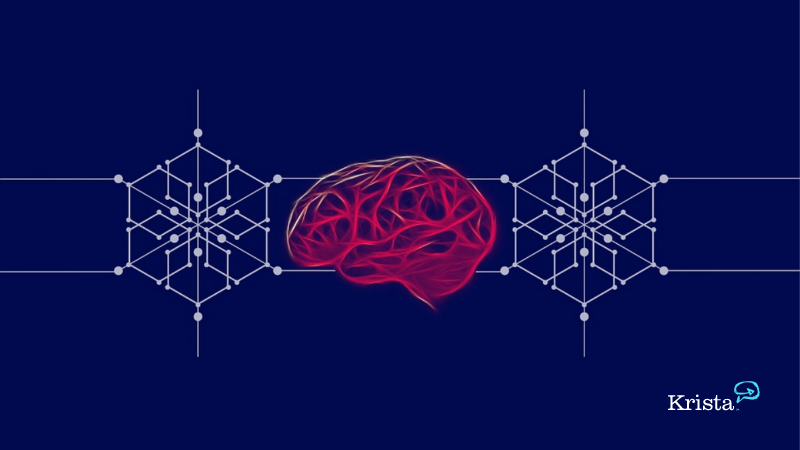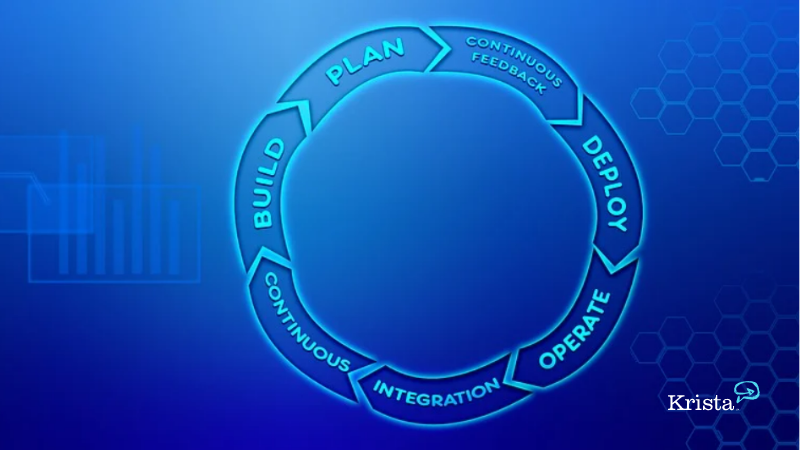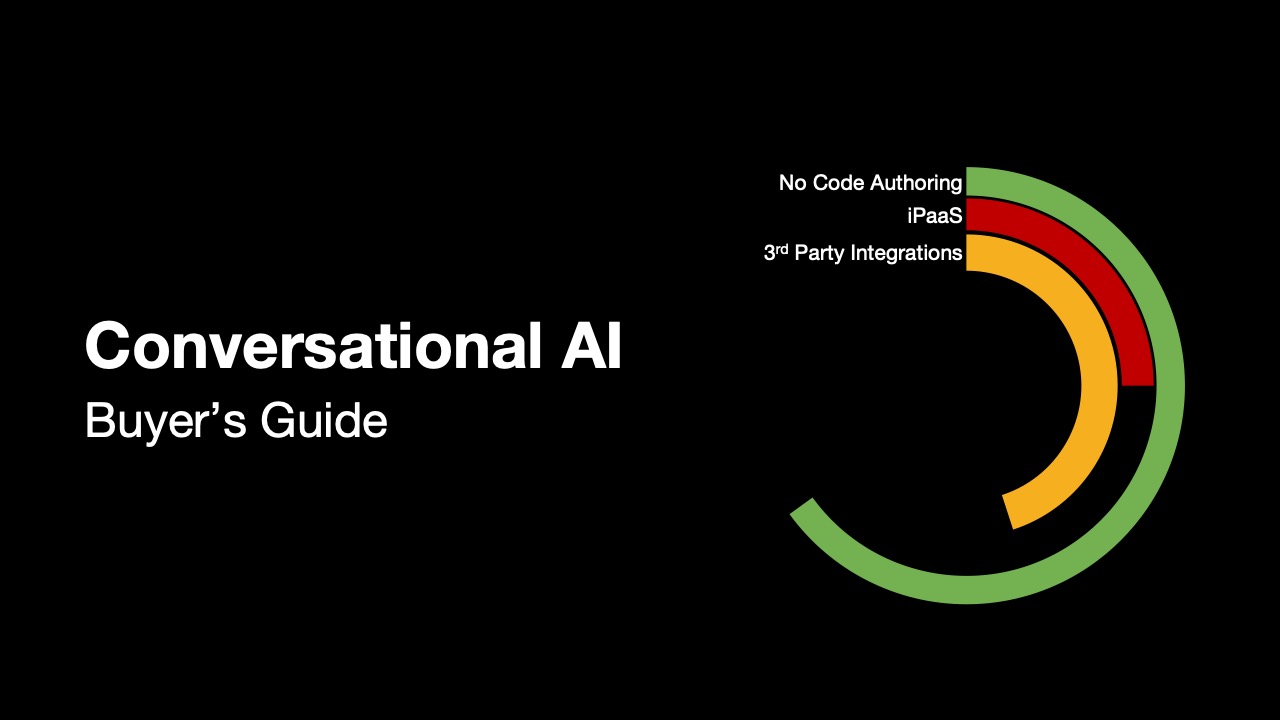As machine learning (ML) becomes more prevalent in business and society, so does the need for accurate and dependable operations. Krista offers comprehensive machine-learning operations (MLOps) to help your business succeed with this valuable technology before your competitors do. Krista will help your organization ensure that the right ML assets are in the right place at the right time, a critical part of designing, building, and perfecting decision support systems that enable your firm to get the best possible outcomes. Without a well-designed and well-executed MLOps strategy, managing machine learning development and deployment complexities is difficult, error prone, slow, and expensive.
What are machine learning operations (MLOps)?
MLOps refers to the collaborative process between data scientists and engineers to operationalize machine learning models. The aim is to enable the organization to deliver value continuously from its data and ML models.
This involves developing, testing, deploying, and monitoring ML models in production environments. MLOps helps ensure that the models are deployed securely in production environments and meet the required quality standards. It also helps to manage model drift (models loosing accuracy over time) and ensure that the models are always up-to-date.
Why do companies need MLOps?
The traditional software development process does not scale high quality deployments without leveraging DevOps, but DevOps alone are unsuitable for developing and deploying machine learning models.
DevOps requires that the right code is in the right place at the right time. MLOps requires that the right code, data, and models are all in the right place at the right time. Additionally, the inherent black box nature of ML adds even more complexity, making them even more difficult to troubleshoot and manage than traditional software. As a result, many organizations are looking for new ways to operationalize machine learning.
Components of MLOps
Three are eight main components of MLOps. These components include:
- DevOps (automated infrastructure provisioning and code deployments)
- Data Engineering
- Feature Engineering
- Machine Learning (model training)
- Model Validation
- Model Deployment
- Production Model Monitoring
- Model Tuning (re-training models with new data)
DevOps:
DevOps is a collection of best practices that combine software development and IT operations (Ops). DevOps is a practice that aims to increase quality, speed up the software development process, and deliver valuable services to customers.
Machine learning models need supporting software to enable users to interact with them; DevOps can be used to automate the process of provisioning hardware and deploying the application. MLOps then automates data preparation, training, testing, deploying, and monitoring ML models. By automating these processes, machine learning and data engineering teams can deliver more reliable models faster and iterate more quickly on new models.
The global return on investment (ROI) in machine learning is less than 2%. In other words, ML, the way most teams are doing it, costs too much to create value for most use cases for most businesses. MLOps are a critical part of strategies to improve quality and reduce the cost of machine learning initiatives.
Machine Learning:
ML is an enabling technology for artificial intelligence that focuses on using algorithms that learn complex patterns in data to create models (mini-computer programs) that predict the most likely outcome for a given set of inputs.
There are two primary types of ML: supervised and unsupervised. Supervised learning algorithms are trained using labeled data (we know the “answer”), while unsupervised learning algorithms are trained using unlabeled data.
Supervised learning is further divided into regression and classification. Regression algorithms predict numbers, like the selling price of a house. Classification algorithms predict what something is, for example whether a picture of an animal is a horse, dog, or cat.
Unsupervised learning splits into clustering and dimensionality reduction. Clustering algorithms are used to group similar data points, while dimensionality reduction algorithms are used to reduce the number of features in a dataset.
Data Engineering:
In the context of MLOps, data engineering refers to making raw data ready to train a model, i.e. feed to a machine learning algorithm. This includes everything from setting up and configuring data quality pipelines, engineering features, and versioning the data.
It is a critical part of MLOps because it provides the foundation upon which ML models can be built, especially at scale.
Some of the most popular tools and technologies used for data engineering in MLOps include:
Data Pipeline Management Tools:
These tools help to orchestrate and manage data pipelines. Popular examples include Apache Airflow and AWS Data Pipeline.
Model Versioning Tools:
These tools help to manage model versions and deployments. Popular examples include MLflow and TensorFlow Serving.
Monitoring & Logging Tools:
These tools help to monitor and log the performance of ML models. Popular examples include Prometheus and Grafana.
Orchestration and Process Platforms:
These platforms help data teams manage the process of building, training, and deploying machine learning models. Krista is an example of an MLOps and process orchestration platform.
How does MLOps work?
The basic idea behind MLOps is to treat a machine learning model as a software product. This means that the process of developing, testing, deploying, and monitoring ML models should be automated and treated similarly to other software development projects.
MLOPs improve these models’ quality by providing a set of best practices for model development, testing, and deployment. MLOps also reduce the risk of deploying faulty ML models into production by automating model validation and facilitating automated testing.
Benefits of Machine learning operations
The major benefits of MLOps include:
Increased collaboration between data scientists, engineers, business analysts, and executives:
MLOps not only improve collaboration between data engineers and data scientists, but with business leaders as well.
Faster delivery of machine learning models to production:
MLOps can help automate the process of delivering machine learning models to production, saving time and resources while reducing costs.
Improved model quality:
By automating model validation, integration testing, and continuous performance monitoring, MLOps help ensure better models deploy into production at lower cost, which directly translates into higher return on investment in this complex and valuable technology.
Greater transparency and accountability:
MLOps provide data scientists and business analysts with greater visibility into how their models are being used in production and can help to hold them accountable for model performance.
Reduced risk of machine learning model drift:
By monitoring models in production, MLOps automatically detect when a model becoming less accurate (drifting) and take corrective actions like retraining the model with new data.
Improved model performance:
Because MLOps can help to ensure that only high-quality models are deployed in production, it can also help to improve the model performance in such machine learning projects.
Challenges with MLOps
There are a few challenges that companies face when implementing MLOps.
1. Machine learning is a complex process with many moving parts
ML is a more complex process than traditional software because it has more moving parts, so the value of deployment automation is even higher for machine learning than it is for traditional software. Many challenges related to consistency, quality, and velocity can arise at each stage of the process, from data collection and data engineering, to model training and validation, to deployment and production monitoring, to audit and regulatory compliance, so it is best to use a solution that can orchestrate complex processes across your teams and own the outcomes of each step in those processes.
2. There is a lack of standardization in the MLOps field
There is a lack of standardization in the MLOps field. This means that there are no clear best practices or guidelines. This can make it difficult for companies to know where to start, and how to ensure that their MLOps implementation is successful. A repeatable method and process can help you establish your best practices instead of manually deploying one project at a time.
3. There is a need for skilled personnel
There is a need for skilled personnel. Implementing MLOps requires a team of experienced DevOps engineers, machine learning engineers, and data science professionals. Lack of skilled resources is challenging for companies with no in-house expertise. Modern platforms can help lower technical skill requirements to help you deliver more value with the talent you have on staff today.
4. Machine learning models can be complex and difficult to deploy
Machine learning models can be complex and difficult to deploy. This can make it challenging to operationalize these models and ensure they are deployed correctly. A process-oriented approach rather than ad hoc deployment methods will enable you to scale deploying high quality models that your teams trust.
5. There is a risk of data leakage
There is a risk of data leakage. When implementing MLOps, companies must be careful to protect sensitive data sets from leaking. This can be a challenge if the wrong people have access to the production data or if the production data is not adequately secured. It’s essential to implement role-based access control to limit data leakage. Similarly, robust automated data engineering pipelines reduce the risk of leaking sensitive data, which can carry huge fines in regulated industries.
6. The costs of implementation can be high
The costs of implementation can be high. Implementing MLOps requires both hardware and software resources, which can be costly for companies. Additionally, skilled personnel can also be expensive to hire. Orchestrating and operationalizing your machine learning projects using MLOps platforms significantly decreases your total costs.
7. Implementation can be time-consuming
Implementation can be time-consuming. MLOps requires significant planning and coordination to ensure that all the necessary resources are in place. This can take some time, which can be a challenge for companies under pressure to get their products to market quickly. However, using a process-oriented platform like Krista enables you to use machine learning to build machine learning and significantly reduces development and deployment times, accelerating time to delivering business value.
Standard MLOps Practices for Success
Despite the challenges, a few standard practices can help ensure success when implementing MLOps.
1. Collaboration:
To successfully implement MLOps, it is important to have a team of experts familiar with both machine learning and DevOps practices. The ML engineers, operations teams, data teams, and other software engineers should work together closely to ensure that the process is smooth and efficient.
2. ML Pipelines:
It is important to have a well-defined ML pipeline in place to ensure that models are properly trained and deployed. These ML pipelines should be designed with experts’ help and tested before they are put into production.
3. Monitoring:
Monitoring is a critical part of MLOps and should be done at every stage of the process. This will help to identify any issues early on and prevent them from becoming major problems.
4. Version Control:
Version control is essential in MLOps in order to ensure that all code and data are properly tracked and can be easily recovered if necessary. This is especially important for machine learning models which can be very complex and in regulated industries where these processes are audited.
5. Validation:
It is important to validate such models before they are deployed into production. Data validation can be done using a variety of methods, such as cross-validation or holdout sets.
6. Continuous Integration and Delivery:
Continuous integration and continuous delivery (CI/CD) are key parts of MLOps and help to ensure that changes can be made quickly and easily. This helps to avoid disruptions in the entire process and keeps the system up-to-date.
7. Testing:
Testing is essential in MLOps to ensure that changes do not break the system. This can be done using a variety of methods, such as unit, integration, and performance testing.
8. Documentation:
Documentation is important in MLOps to ensure that everyone understands the process and knows how to use the system so they can improve over time. This can be in the form of technical documentation or user manuals but is best kept in a process-oriented platform that records and documents all of the steps.
Machine Learning Layered on DevOps
The term DevOps was coined in 2009, although the practice has been around much longer, and it has proven to be very successful in helping organizations increase the ROI of their technology investments by improving the quality and speed of their software development lifecycle. While DevOps is the foundation for MLOps, in recent years there has been a growing interest in improving traditional DevOps with ML. The idea is to use ML to automate more of the software development process, such as testing, deployment, and monitoring.
There are many potential benefits of using ML in DevOps. For example, ML can help organizations automatically identify issues in their software development process and suggest possible fixes. Additionally, ML can be used to generate documentation or test cases automatically. By automating these tasks, ML can help organizations reduce the time and cost associated with developing software.
However, some challenges need to be considered when using ML in DevOps. In particular, it can be difficult to integrate ML into existing DevOps processes and tools. Additionally, there is a lack of skilled practitioners understanding how to use ML in DevOps effectively. As a result, it is important for organizations to carefully consider whether ML is right for them before investing significant resources into it.
How to Implement MLOps in your organization
Krista is an AI-led automation platform to help you establish your machine learning operations (MLOps). Krista helps organizations adopt best practices for managing their ML models throughout the entire machine learning lifecycle, from data prep, to model training, to production. Krista provides a scalable method to help your team lower costs and deploy to production faster.
- Develop and operationalize a strategy for your desired business outcomes
- Define and implement processes according to your business and regulatory requirements
- Democratize model development and process orchestration to remove technical skill barriers
- Automate model training, testing, and continuous deployment
- Develop models and monitor their performance in production along with seamless integration
- Continuously improve your ML systems and model design with diagnostics governance
Contact us today to get started on your MLOps journey!
Frequently Asked Questions
Machine learning is a branch of artificial intelligence that allows computers to receive and understand data without being told what to do with said information. There are three types of machine learning: supervised learning, unsupervised learning, and reinforcement learning.
The supervised learning technique is when the computer is given a set of labeled training data that includes “the answers” and learns to generalize patterns in the data that are then used to make predictions about new data. Unsupervised learning is a form of machine learning in which the computer is typically only told how many groups to create with “similar” data; it must discover structure in the data itself. Reinforcement learning is where the computer is given an outcome and is rewarded for each iteration in which it gets closer to achieving the desired outcome, for example learning how to play a video game.
Machine learning is increasingly being used in operations management to improve efficiency and effectiveness. Machine learning can help identify patterns and trends that would otherwise be difficult to discern by analyzing data. This information can then be used to predict future events or optimize decision-making processes. Additionally, machine learning can be used to automate various tasks within an organization, such as workforce scheduling or inventory management. Ultimately, the goal of using machine learning in operations management is the continuous improvement in the organization’s overall performance.
There are numerous ways in which machine learning can be applied in operations management. One common use case is predictive maintenance. In this scenario, machine learning is used to analyze data management from sensors or other sources in order to identify patterns that indicate when a piece of equipment is likely to fail. This information can then be used to schedule preventive maintenance before the equipment breaks down, avoiding costly downtime. Another use case for machine learning in operations management is demand forecasting. Here, machine learning is used to analyze historical data in order to predict future demand for a product or service. This information can be used to optimize inventory levels, ensuring that the right products are available at the right time.
Machine learning is a powerful tool that can be used to improve operations management in a variety of ways. By automating tasks, reducing downtime, and improving forecasting accuracy, ML development can help organizations achieve their goals.
There are a variety of algorithms that can be used for machine learning. One of the simplest algorithms is linear regression. This algorithm is used to find the best fit line for a set of data points. Other popular algorithms include Random Forest, Gradient Boost, and the k-nearest neighbor (KNN) algorithm. These algorithms are used to find patterns in training data, generate code to capture those patterns (a model), and use those models to make predictions about future outcomes. Ample knowledge of DevOps, software engineering, data engineering, data science, and AI are required to execute machine learning projects.













